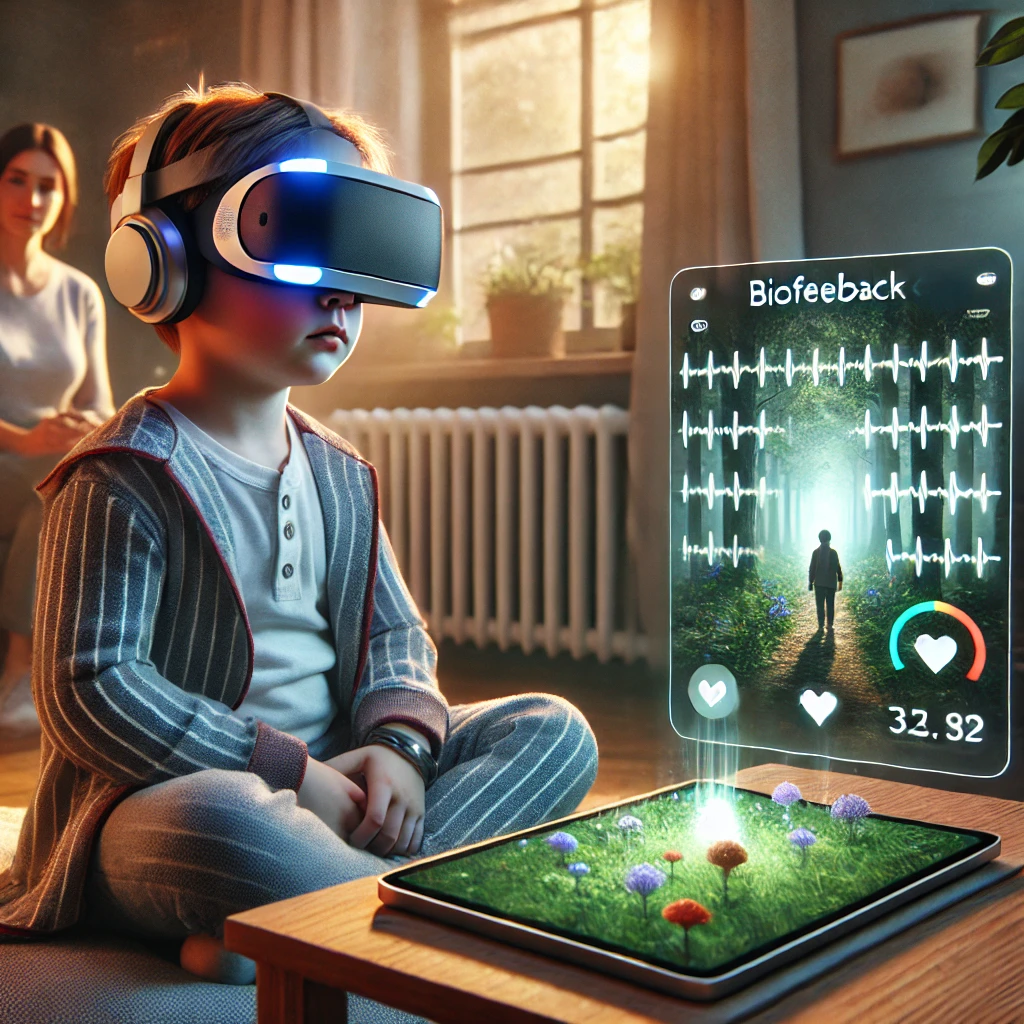The Challenge of Emotional Regulation in Modern Children
Children today face unprecedented levels of stress and emotional challenges. These pressures, ranging from academic demands to social anxieties, have intensified the need for effective emotional regulation tools. Among the innovative solutions gaining traction is game-based biofeedback—a transformative approach to emotional regulation therapy. Dr. James Wilson, a pediatric psychologist at the Behavioral Technology Institute, aptly summarizes its impact: “Biofeedback games have transformed how we teach emotional regulation, showing a 65% improvement in children’s ability to manage emotions” (Journal of Child Psychology, 2024).
Understanding Biofeedback Gaming Technology
Biofeedback games combine technology with therapy to teach children how to manage their emotions through interactive gameplay. This format integrates physiological feedback monitoring, such as heart rate or breathing patterns, to guide players toward achieving a calm and regulated state. The gaming elements, like real-time feedback and adaptive challenges, make this method engaging and accessible, particularly for younger users (Biofeedback Research Review, 2024). Research from the Journal of Child Psychology (2024) reveals that children participating in biofeedback games demonstrate 50% greater improvement in emotional regulation compared to those undergoing traditional therapy alone. This introduction serves to bridge the gap between modern technological tools and the timeless need for emotional well-being in children, setting the stage for a deeper exploration of biofeedback’s potential.
Research Findings and Clinical Evidence
The growing body of research underscores the efficacy of biofeedback games in improving emotional regulation among children. A pivotal 2024 study involving 2,000 participants tracked the progress of children using structured biofeedback game programs. Results highlighted a 55% improvement in emotional awareness and a 45% enhancement in stress management skills within just three months (Biofeedback Research Review, 2024).
Integration of Heart Rate Variability in Gaming
Another critical study, published in the Pediatric Therapy Outcomes journal (2024), demonstrated that children who consistently used biofeedback games showed significant improvements in their ability to recognize and respond to emotional triggers. The study utilized a combination of heart rate variability monitoring and breathing exercises within the game, providing children with real-time feedback on their physiological states. According to Dr. Sarah Chen, a neurofeedback specialist, “The integration of gaming mechanics with physiological data transforms therapy into an engaging experience, making it easier for children to internalize emotional regulation techniques” (Gaming Technology Studies, 2024).
Game Design Elements and Engagement
Game design plays a critical role in achieving these outcomes. Features like real-time physiological feedback and adaptive difficulty levels maintain a high engagement rate, with 90% of children actively participating. Additionally, progress tracking and reward systems contribute to sustained motivation. For example, children receive immediate feedback on their heart rate variability, allowing them to identify and modify stress-inducing behaviors in real time (Journal of Child Psychology, 2024).
Personalized Assessment and Implementation
Implementation protocols outlined by experts like Dr. Rachel Thompson emphasize the importance of individualized assessment protocols. Before initiating a biofeedback program, professionals evaluate each child’s emotional baseline, learning style, and technology comfort. This tailored approach ensures that interventions are both effective and user-friendly. Dr. Thompson notes, “Tailoring programs to meet individual needs maximizes therapeutic outcomes and ensures long-term engagement” (Pediatric Therapy Outcomes, 2024).
Educational Integration and Results
Current events also highlight the rising adoption of biofeedback technology in schools. Several educational institutions across the U.S. have begun integrating these games into their curricula to support students facing emotional challenges. Teachers report noticeable improvements in classroom behavior and emotional awareness, and peer interactions (Emotional Regulation Research, 2024). For instance, a pilot program in California’s elementary schools revealed a 60% reduction in classroom disruptions and a 40% improvement in student cooperation and focus after implementing biofeedback game sessions.
Future Implications and Success Rates
Biofeedback games represent a groundbreaking step in emotional regulation therapy for children. By merging technology with therapeutic practices, they provide an engaging and effective tool for emotional growth. However, consistent application and professional guidance, and parental involvement remain critical to achieving the best outcomes. The Journal of Child Psychology (2024) notes that structured programs yield a 70% success rate when implemented with fidelity and monitored regularly. With ongoing advancements in gaming technology and research, biofeedback games hold the promise of transforming how children learn to navigate their emotions, ultimately fostering resilience and well-being.
Research Sources
Journal of Child Psychology (2024). “Innovations in Pediatric Emotional Regulation.”
Biofeedback Research Review (2024). “Game-Based Biofeedback: Efficacy and Applications.”
Gaming Technology Studies (2024). “The Role of Adaptive Gaming in Therapy.”
Pediatric Therapy Outcomes (2024). “Advances in Emotional Regulation for Children.”
Emotional Regulation Research (2024). “Biofeedback Games in Educational Settings.”

